Miné Okubo’s Masterpiece: The Art of Citizen 13660
August 28, 2021 – March 27, 2022
2021 marks the 75th anniversary of artist Miné Okubo’s graphic memoir, Citizen 13660. When it was first published in 1946, it was groundbreaking. Not only was it the first book-length account on America’s concentration camps from the perspective of a former incarceree, but it was also an early example of a graphic memoir. In Citizen 13660, through a series of nearly 200 illustrations, each accompanied by a caption, Miné Okubo captured how World War II and the subsequent incarceration upended her life.
For the first time, the materials comprising Miné Okubo’s masterpiece will be exhibited, revealing the art of Citizen 13660.
Larger image files available upon request to mediarelations@janm.org.
プレスのお問い合わせ
プレスのお問い合わせは、mediarelations@janm.orgにメールまたは213.625.0414にお電話ください。 本展覧会の詳細は、janm.org/ja/exhibits/mine-okubo-masterpieceをご覧ください。
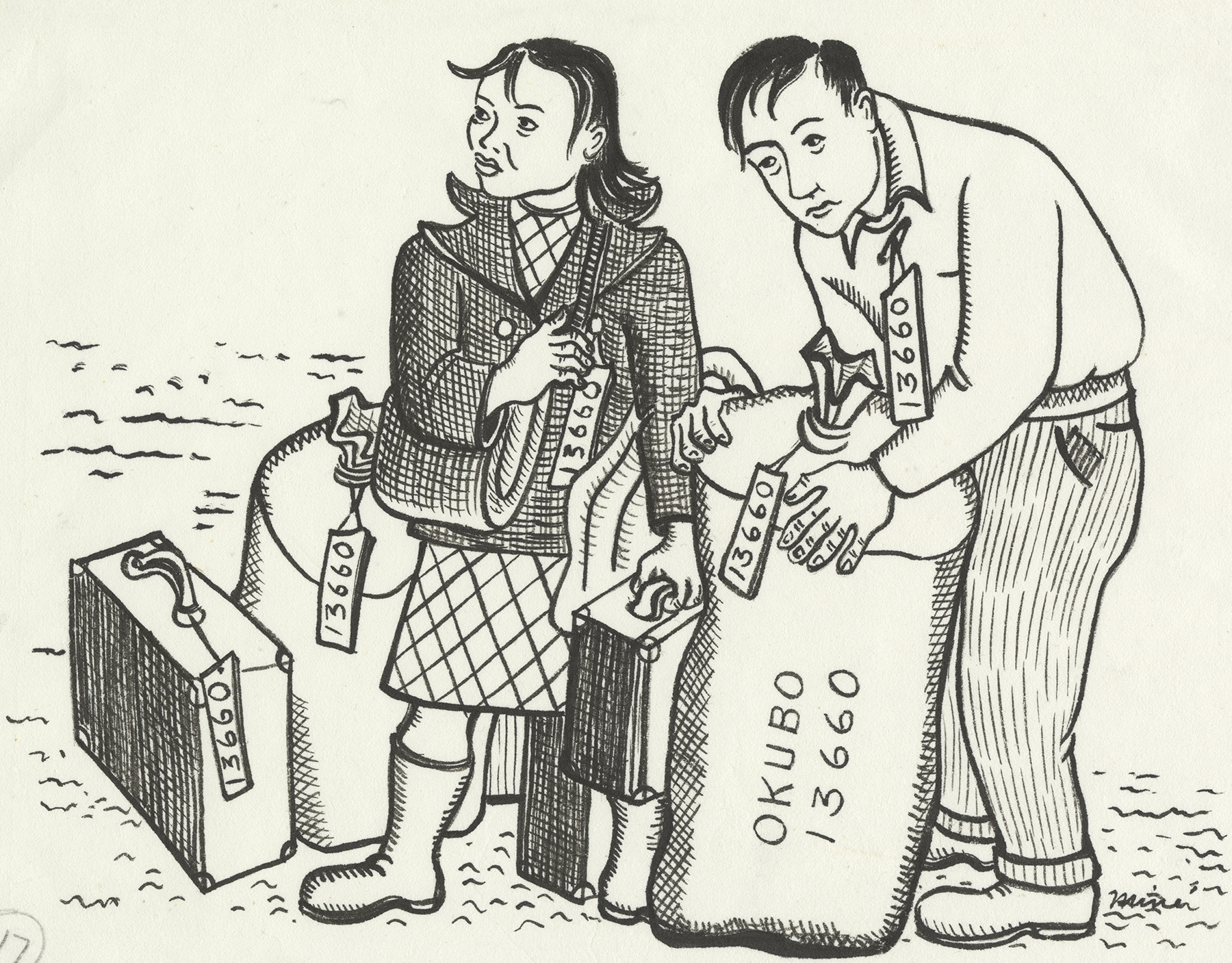
Illustration from Citizen 13660 depicting Miné Okubo and her brother Toku standing with their government-issued family identification number affixed to both their baggage and clothing.
Japanese American National Museum, Gift of Miné Okubo Estate, 2007.62.23
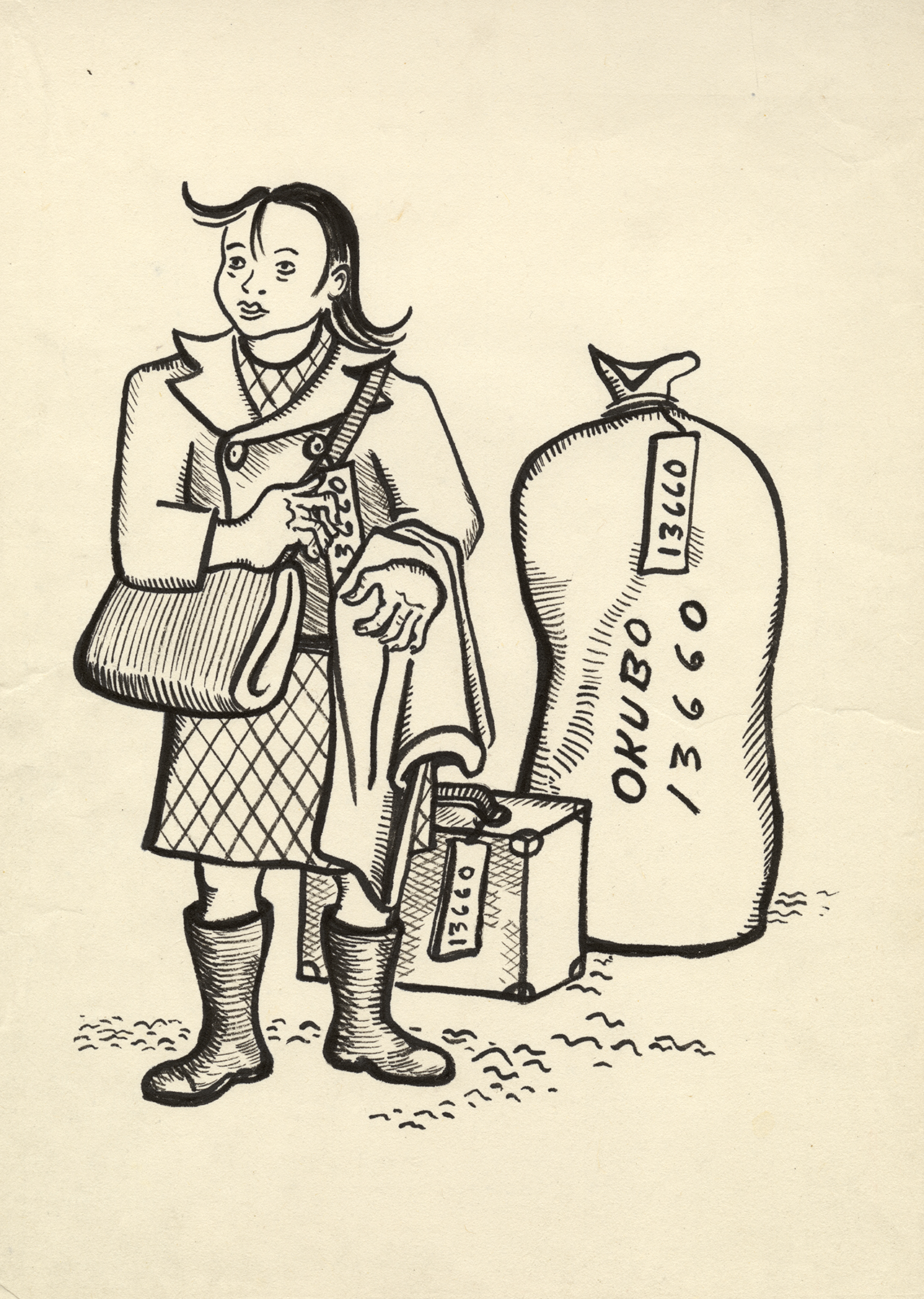
Depiction of Miné Okubo standing with baggage marked with government-issued family identification number, 13660.
Japanese American National Museum, Gift of Miné Okubo Estate, 2007.62.217

Image from Miné Okubo’s graphic memoir Citizen 13660 where she depicts herself sketching while in Tanforan.
Japanese American National Museum, Gift of Miné Okubo Estate, 2007.62.49

Long lines were common at Tanforan detention center. Miné Okubo documented the people who were waiting to receive typhoid and smallpox vaccinations.
Japanese American National Museum, Gift of Miné Okubo Estate, 2007.62.55
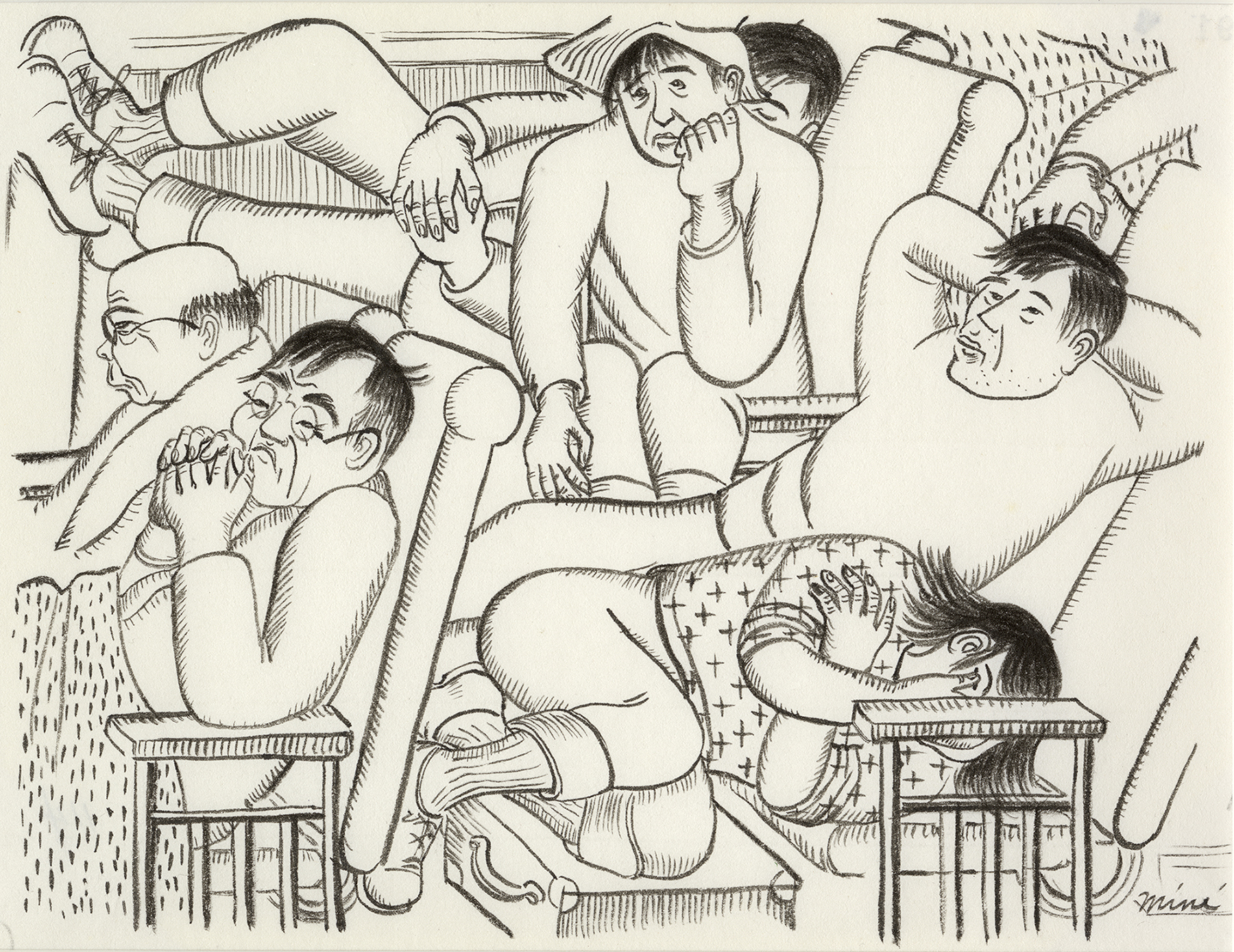
Once again, Miné Okubo and other incarcerees were uprooted from their daily lives, having to undergo a two-day train ride to Topaz, Utah.
Japanese American National Museum, Gift of Miné Okubo Estate, 2007.62.120
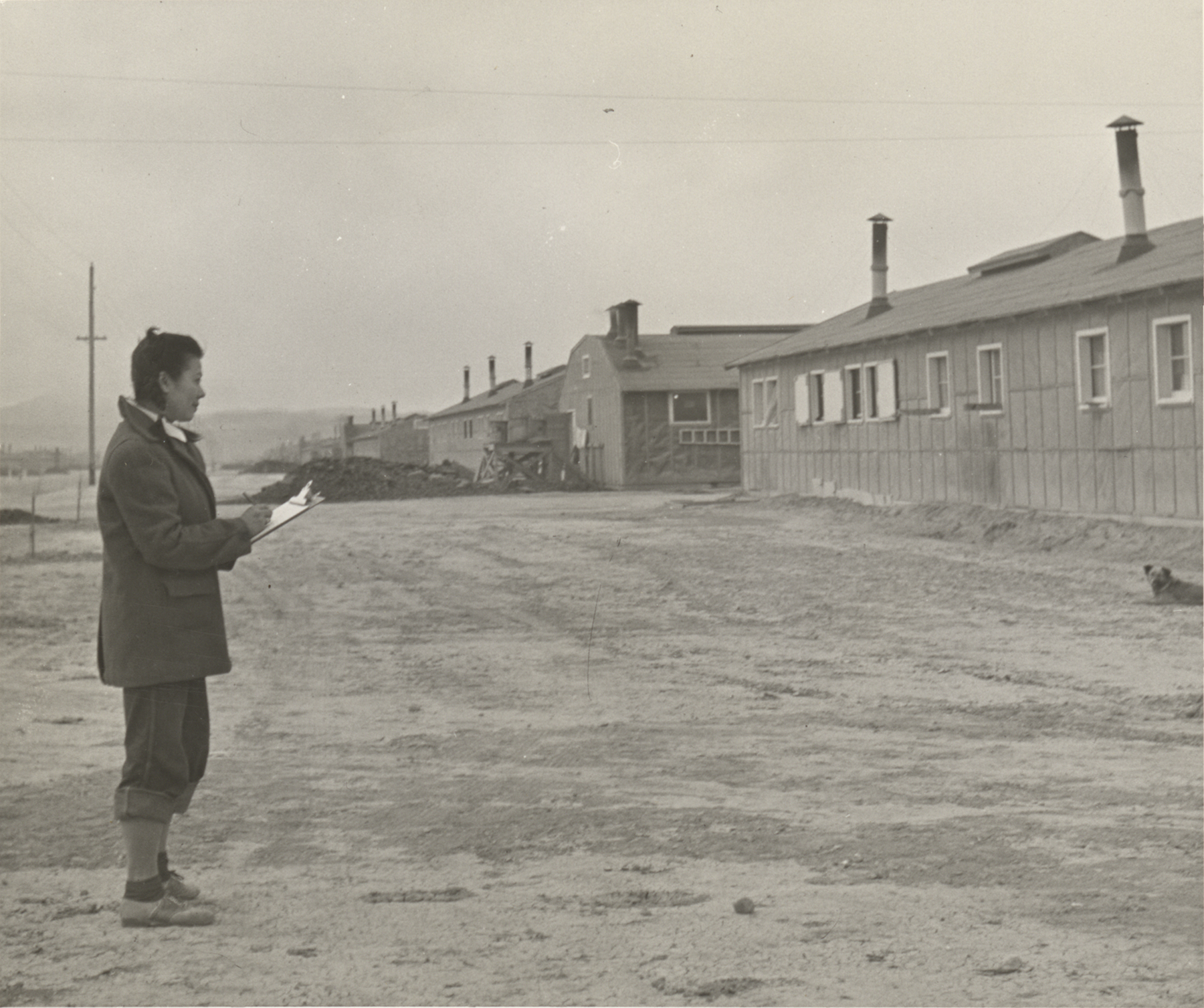
Miné Okubo sketched incessantly while incarcerated, documenting the everyday lives of the Japanese Americans at camp.
Japanese American National Museum, Gift of Miné Okubo Estate, 2007.62.549_1

Miné Okubo was thirty years old when she was incarcerated at Tanforan in San Bruno, California and Topaz, Utah.
Japanese American National Museum, Gift of Miné Okubo Estate, 2007.62.557_2
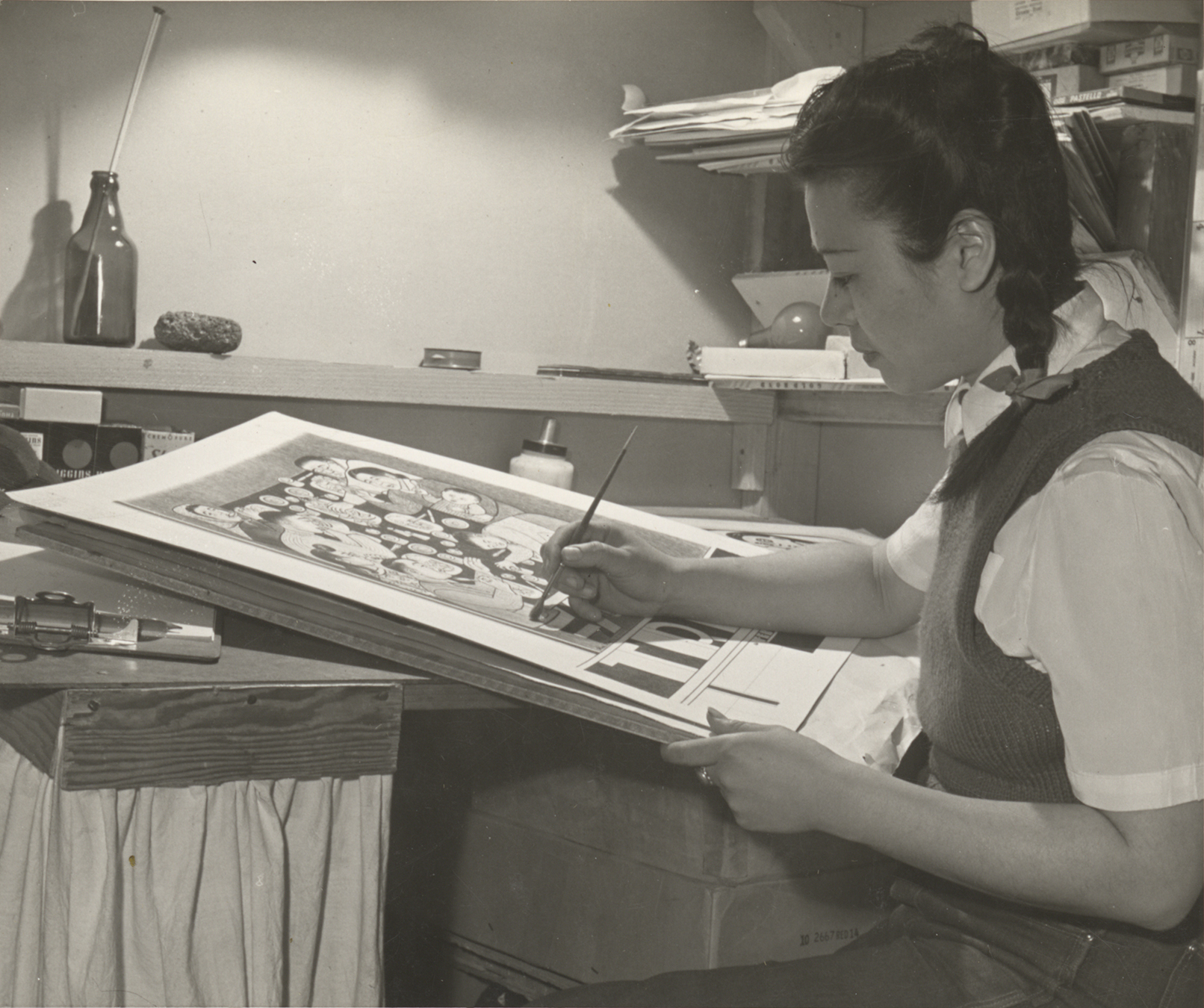
Miné Okubo served as artistic director for a literary arts magazine created in Topaz known as Trek. Here she is drawing the cover of their second issue.
Japanese American National Museum, Gift of Miné Okubo Estate, 2007.62.549_5
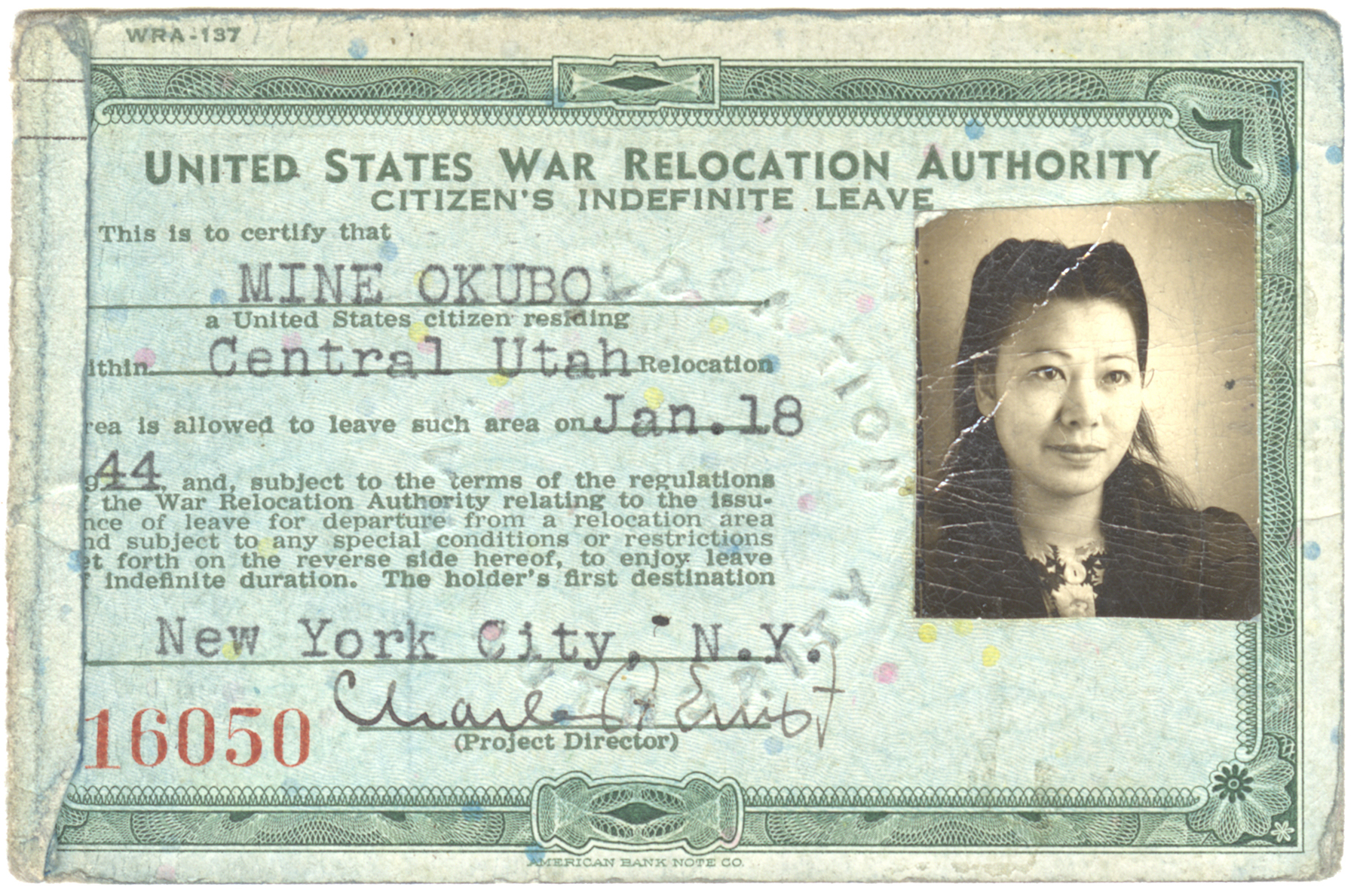
Image of Miné Okubo’s Citizen’s Indefinite Leave paper to authorize her release from Topaz to New York City in 1944.
Japanese American National Museum, Gift of Miné Okubo Estate, 2007.62.526_1
